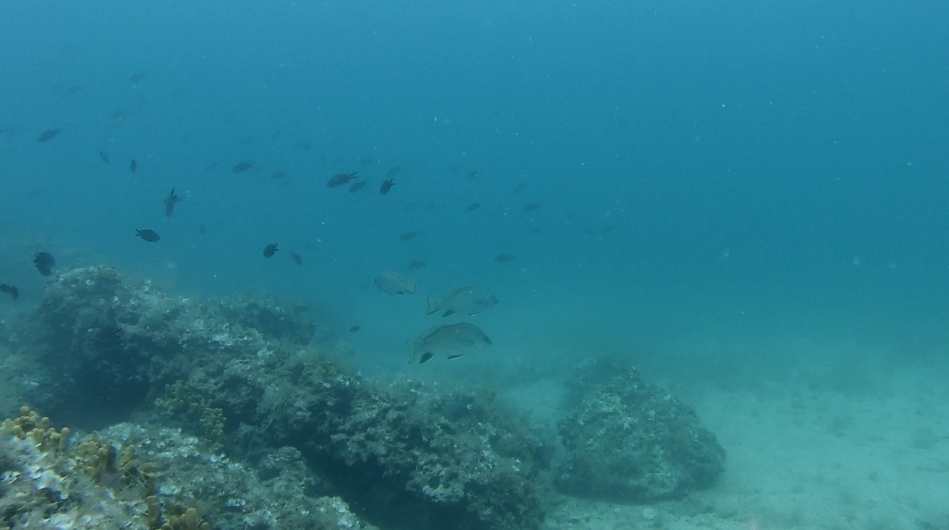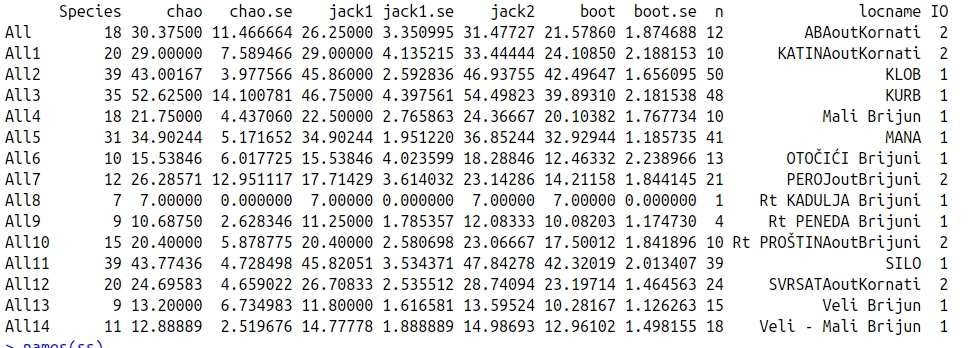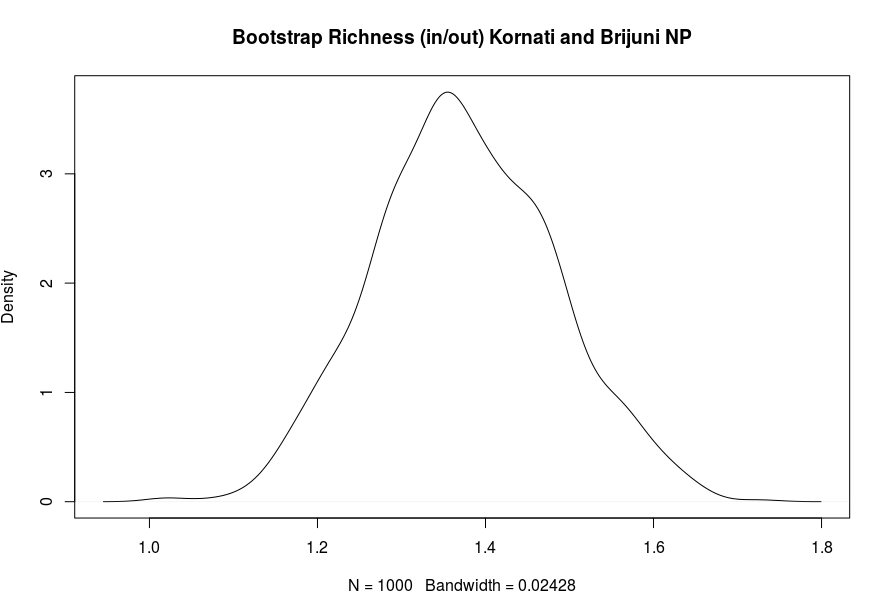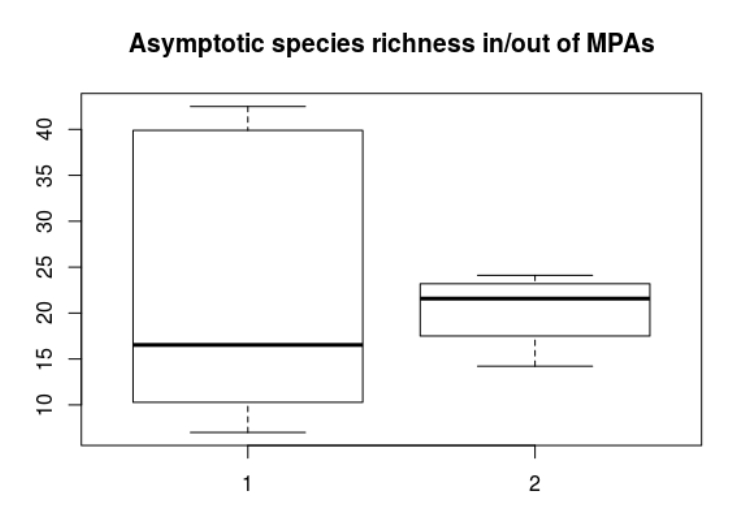
Fish biodiversity inside/outside MPAs as revealed by BRUV
A primary goal of COREBIO is to understand the drivers of community organization inside and outside of Croatian MPAs. Repeated deployment of BRUVs at many matched locations inside and outside MPAs allows statistical modeling of the asymptote of the species accumulation curve and estimation of the total seen plus unseen species in the community.
The following table shows several methods of finding the asymptotic total species richness at all BRUV locations in and out of Brijuni and Kornati NPs. Shown are the Chao, jacknife, and bootstrap species richnesses and their associated standard errors, the name of the location sampled and whether that location was inside or outside the MPA (2= outside, 1 = inside).
As can be seen, the total asymptotic species richness ranges from approximately 43 at Klobučar and Šilo to in the teens at other locations.

If a species accumulation curve is estimated for all sites inside and outside overall, randomly rarifying the inside sample size to equal the outside sample size of n = 77 deployments, the total species richness becomes approximately 35% higher inside the MPA than outside.

Repeating this rarifying process 1000 times yields an average of about 35% more species inside the MPAs than outside, as shown in the empirical bootstrap density plot below.

The boxplot below shows that the average asymptotic richness at any site is not different between inside and outside locations. This indicates that the difference in total richness is due to beta diversity rather than alpha diversity within MPAs.

The causes of higher beta diversity inside the MPAs is not known. One hypothesis is that locations inside MPAs are less degraded by human activity, resulting in a higher diversity of habitats inside, and a lower diversity of habitats outside due to transition to increased sediment cover and lower cover of algae and seagrass. We will investigate the causes of this finding through more detailed analysis of fish biodiversity at a diversity of habitat types.